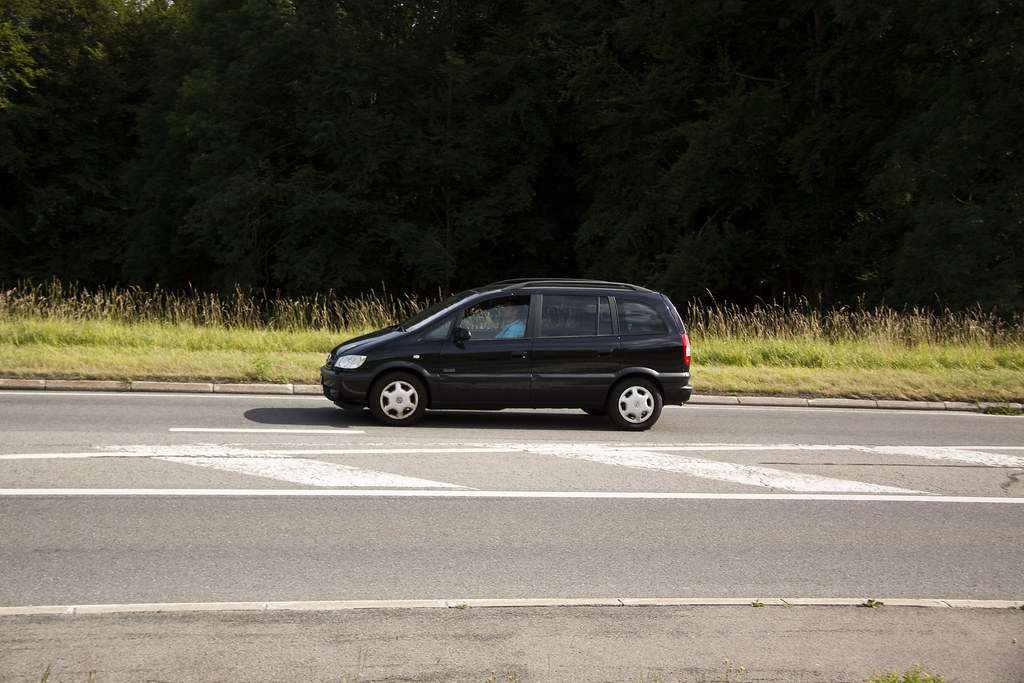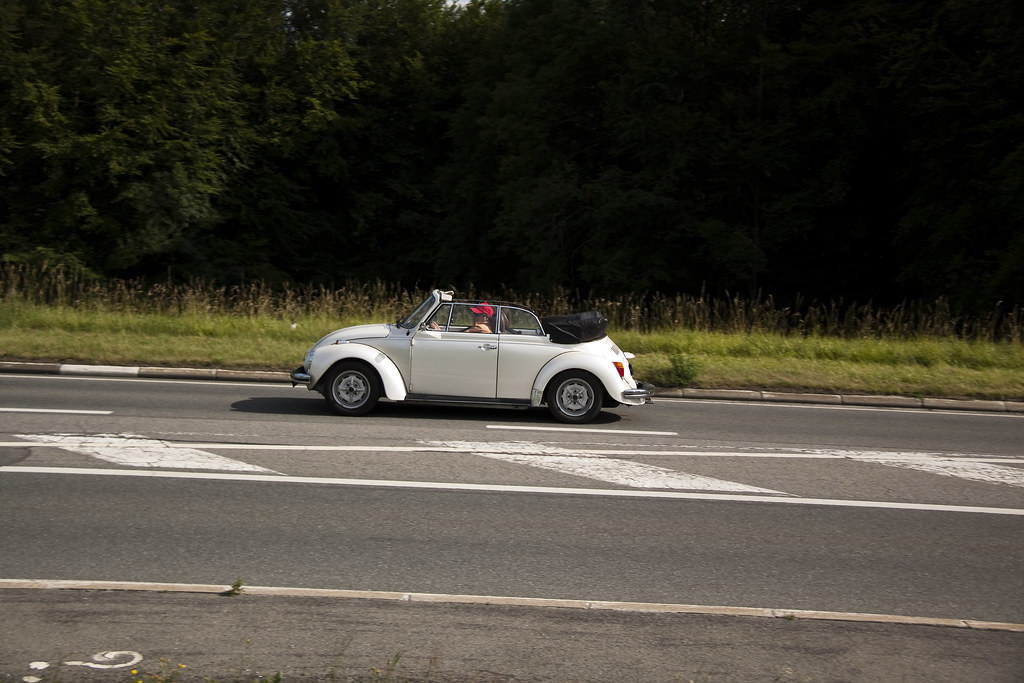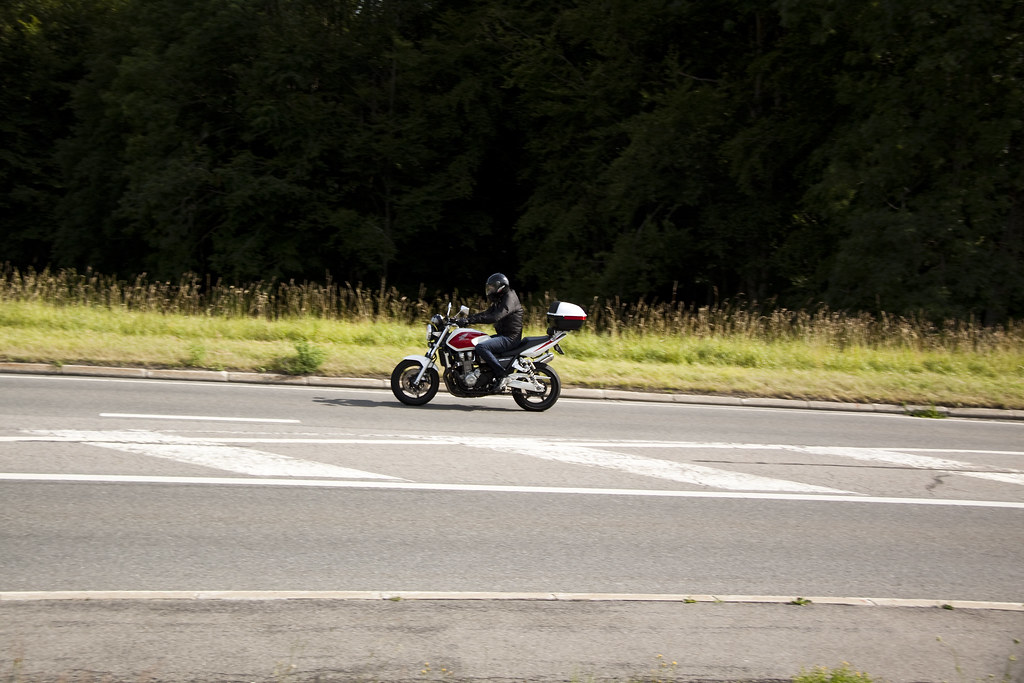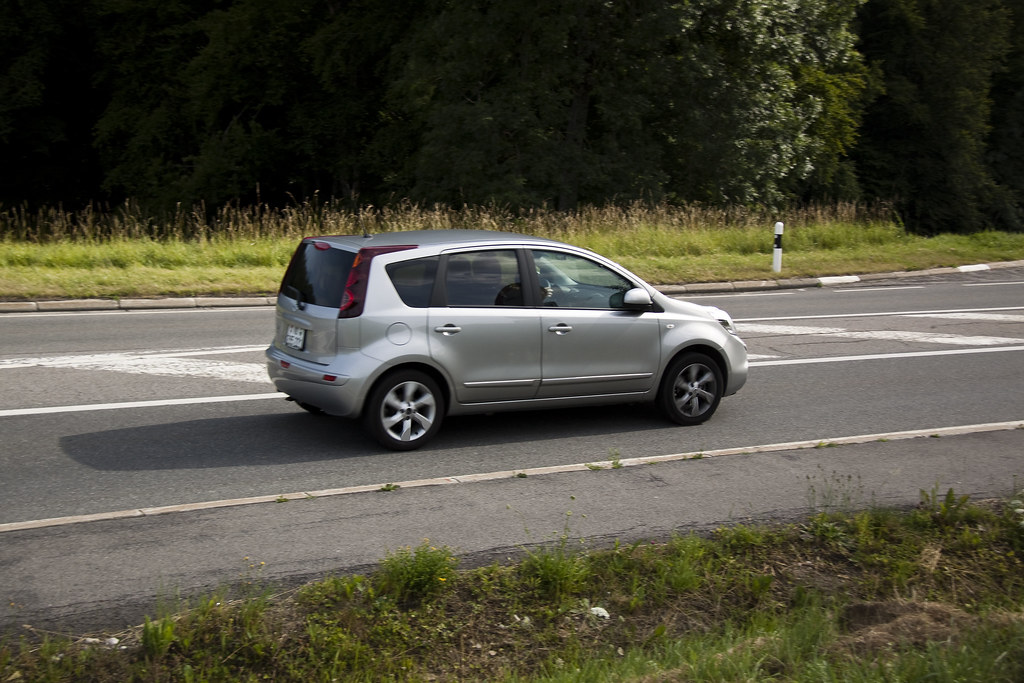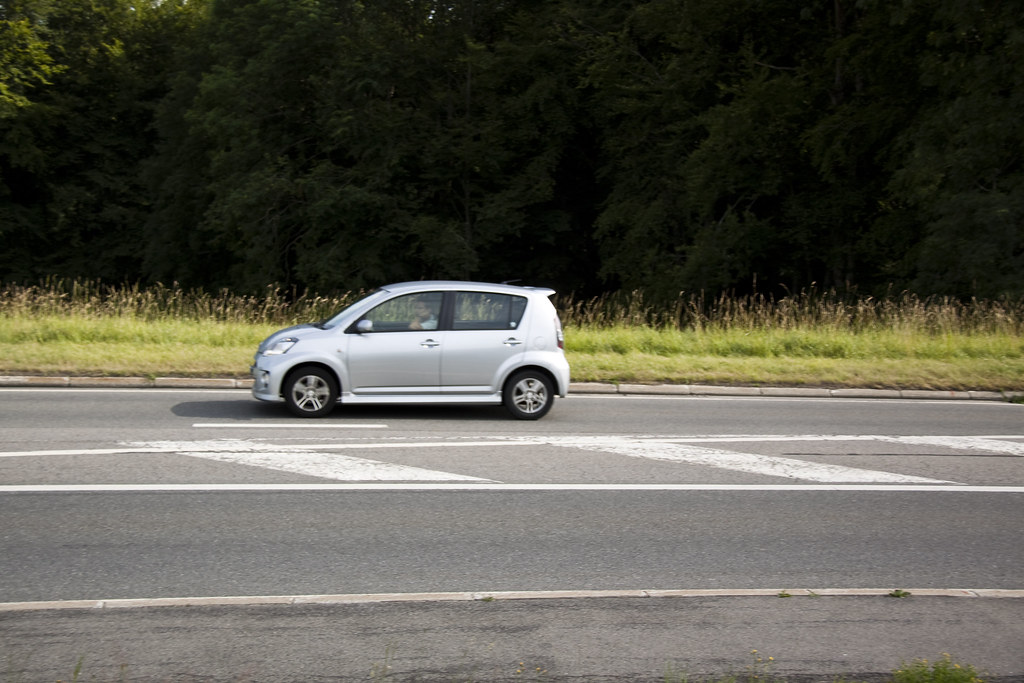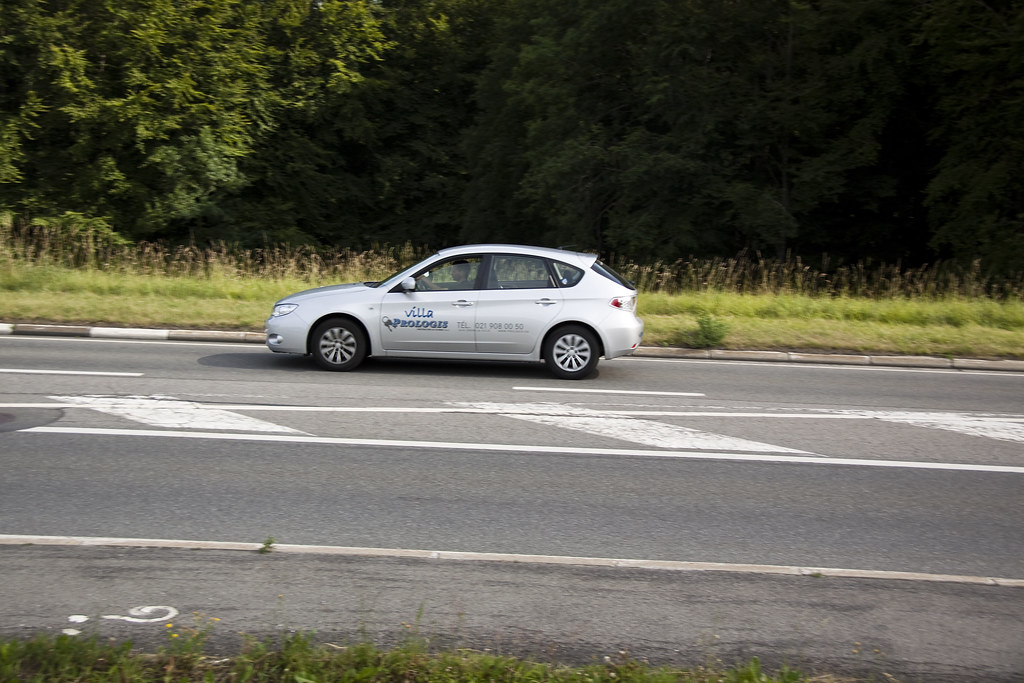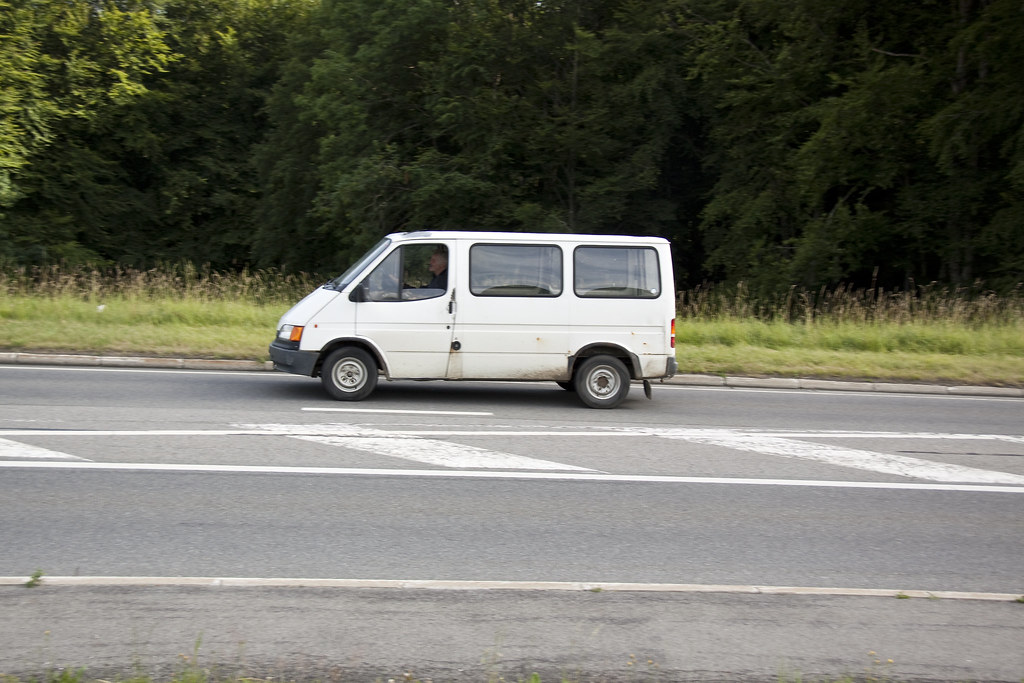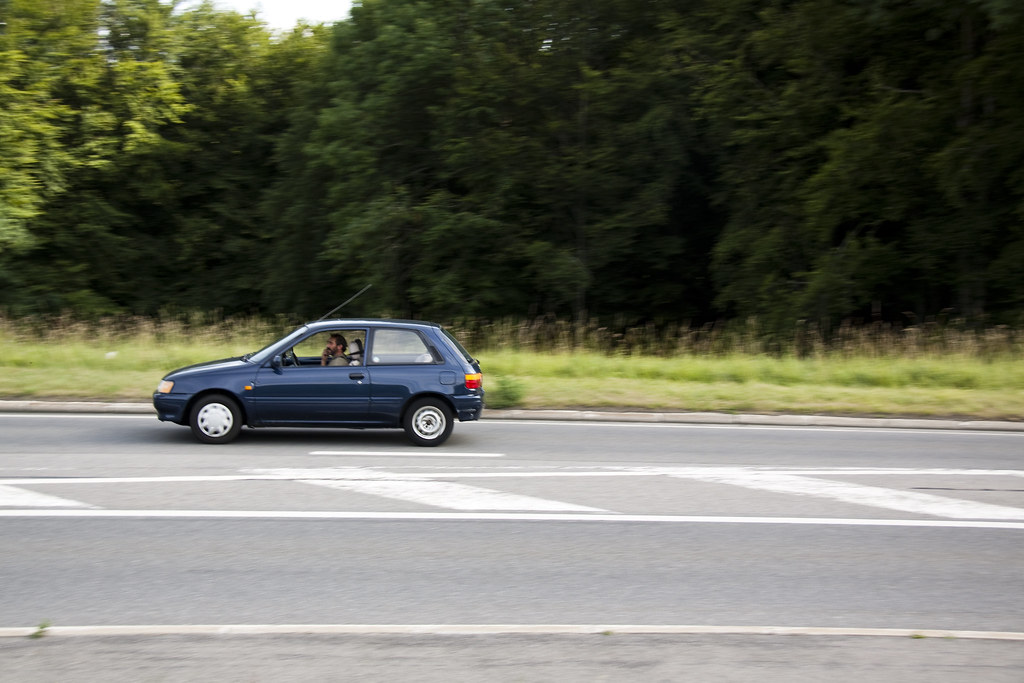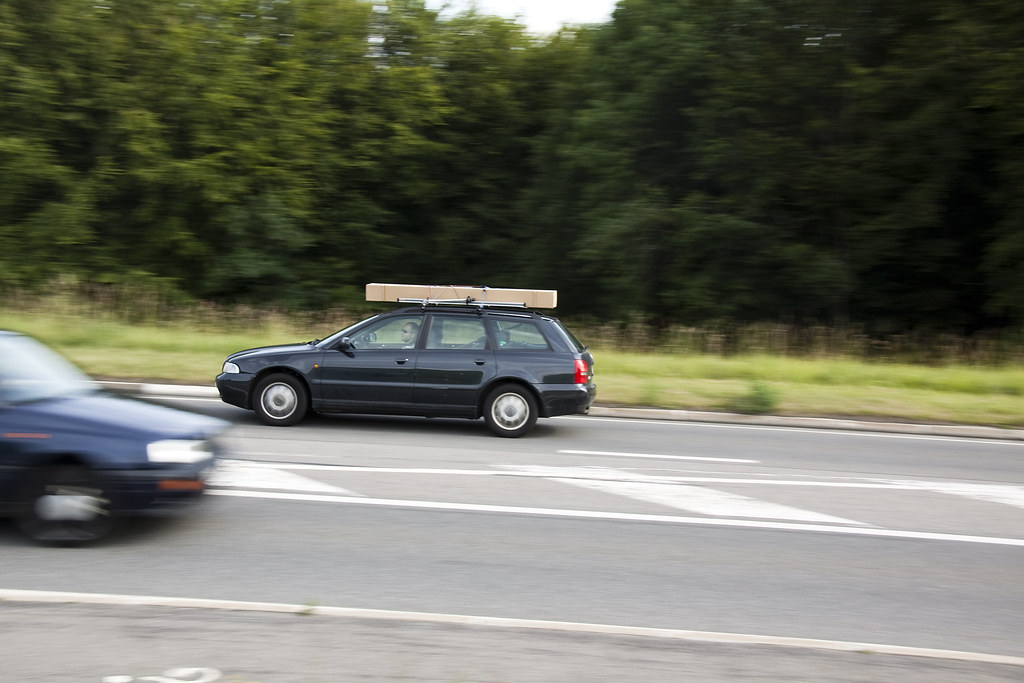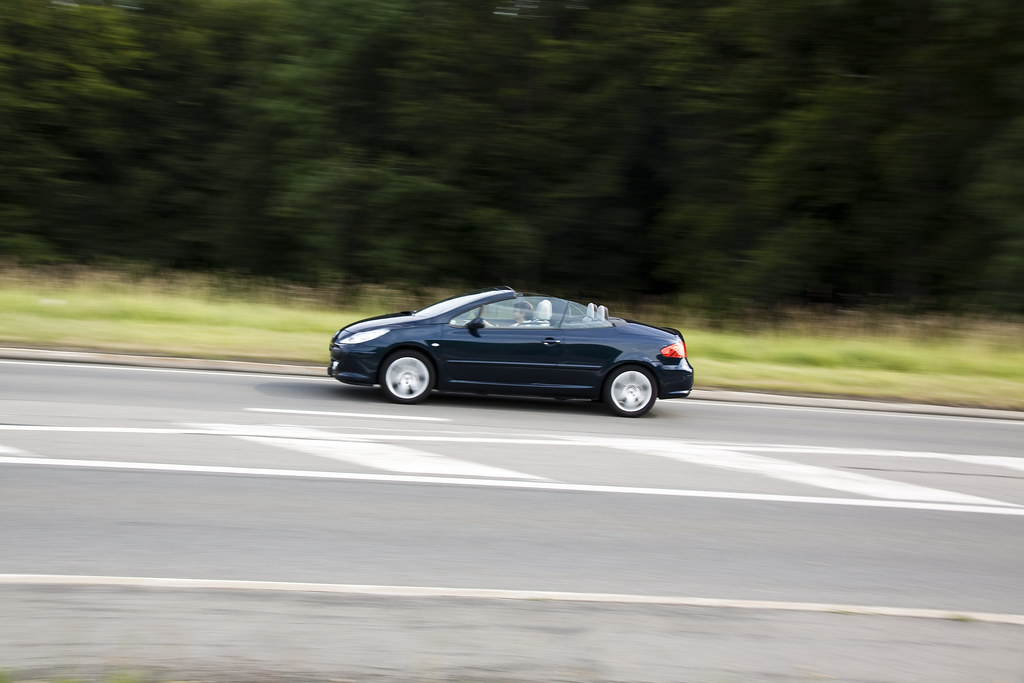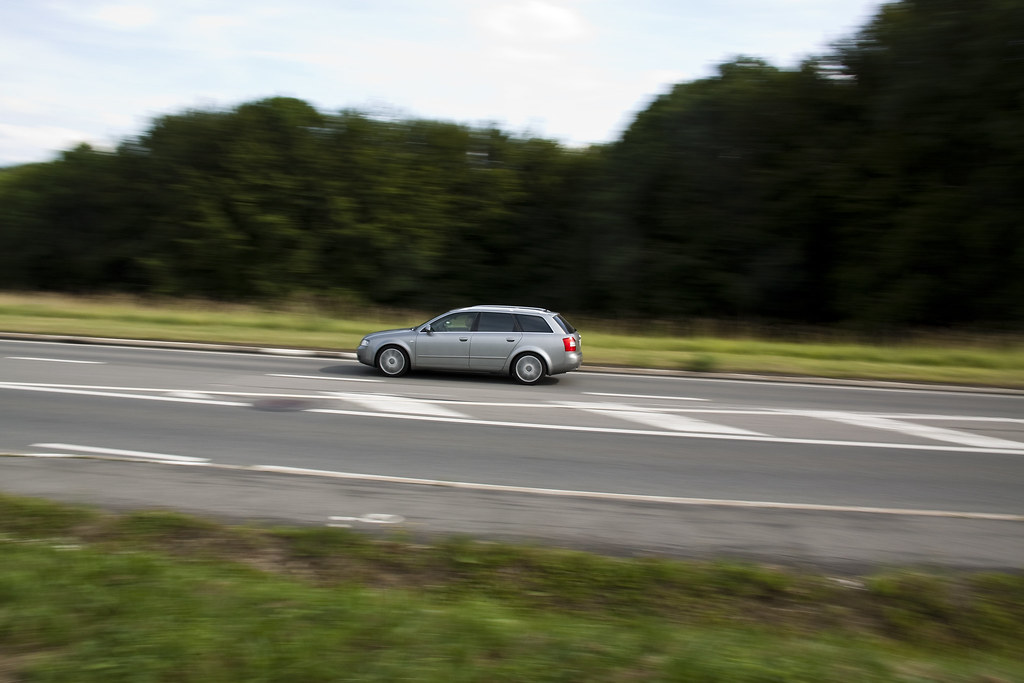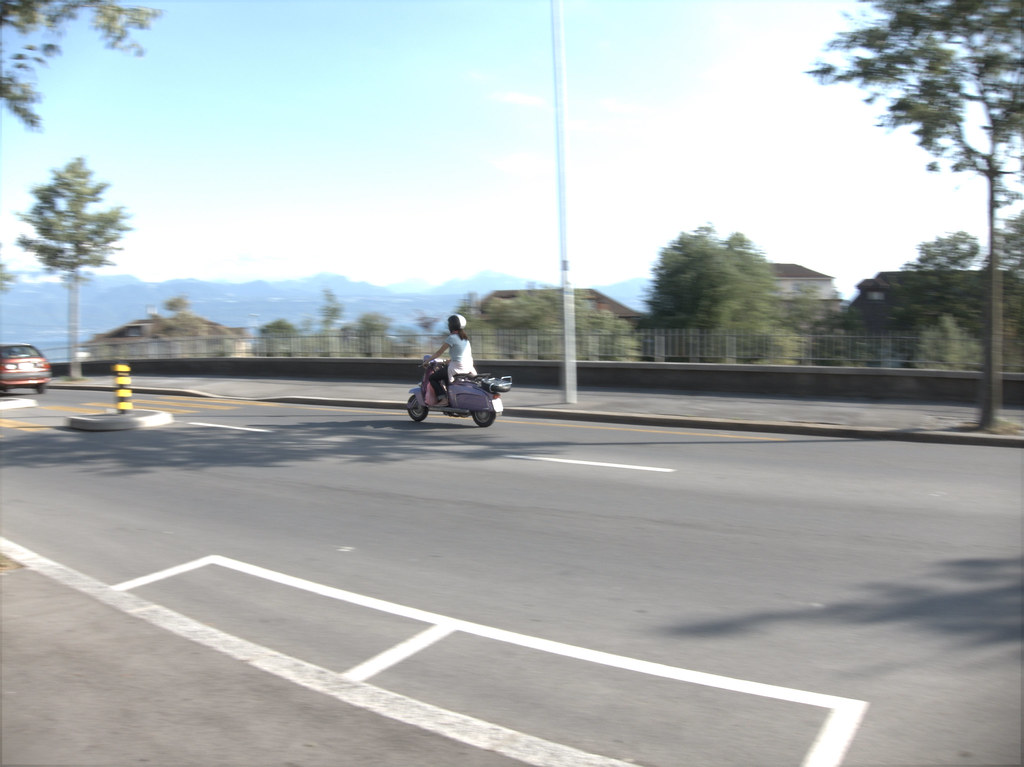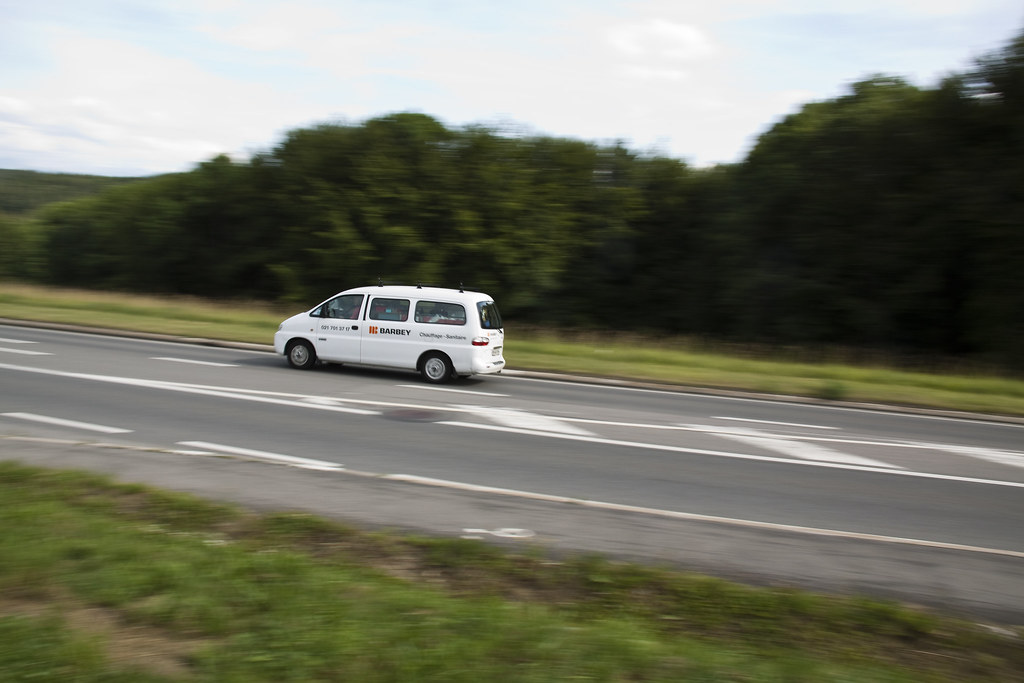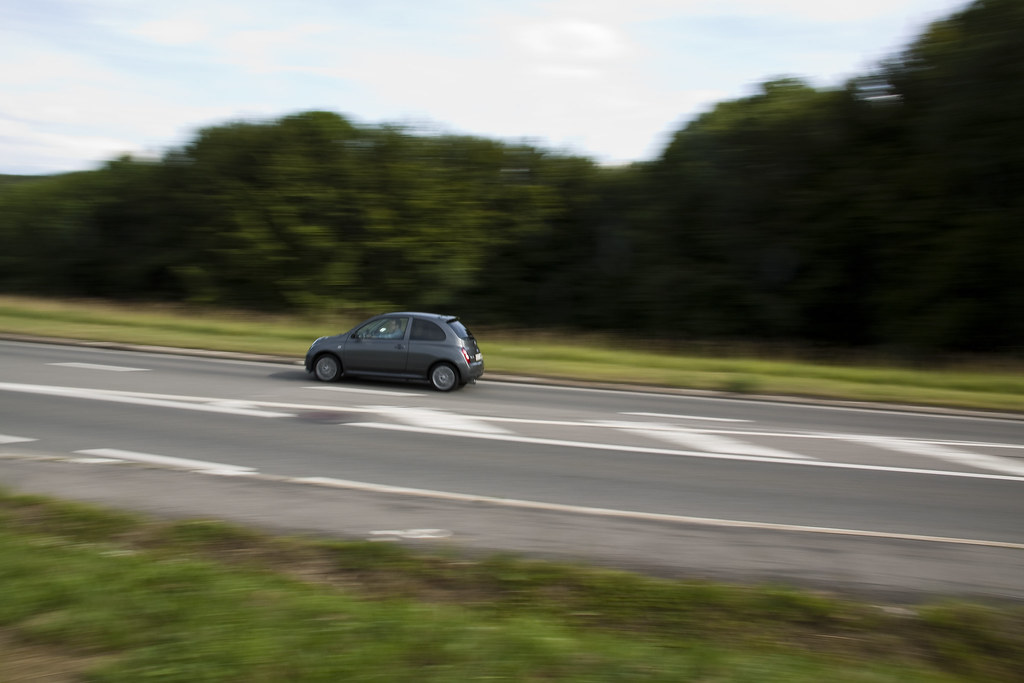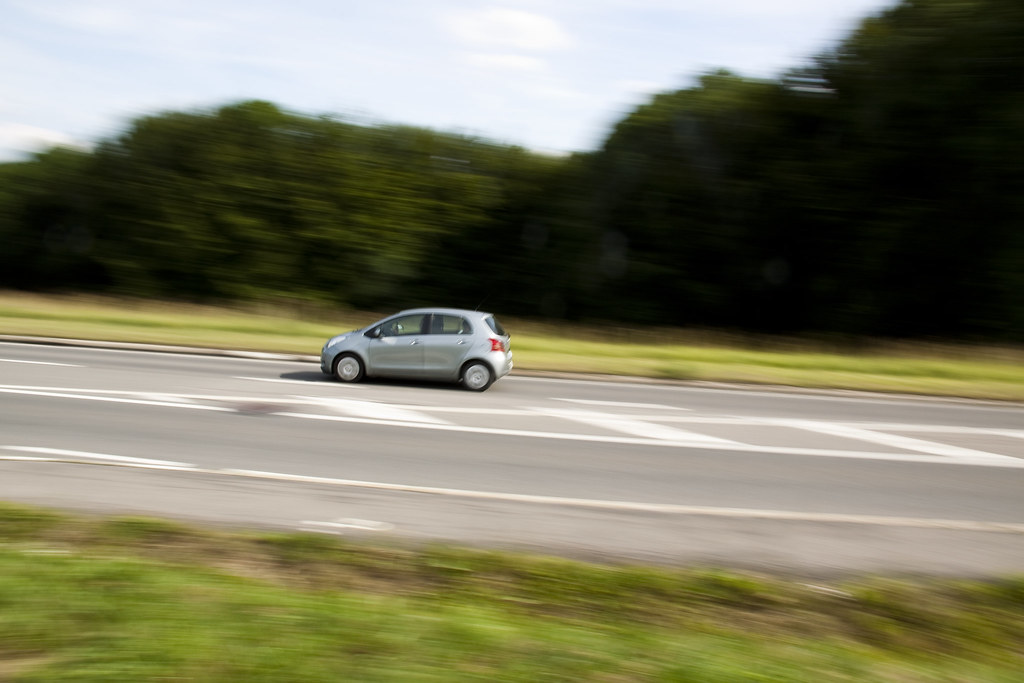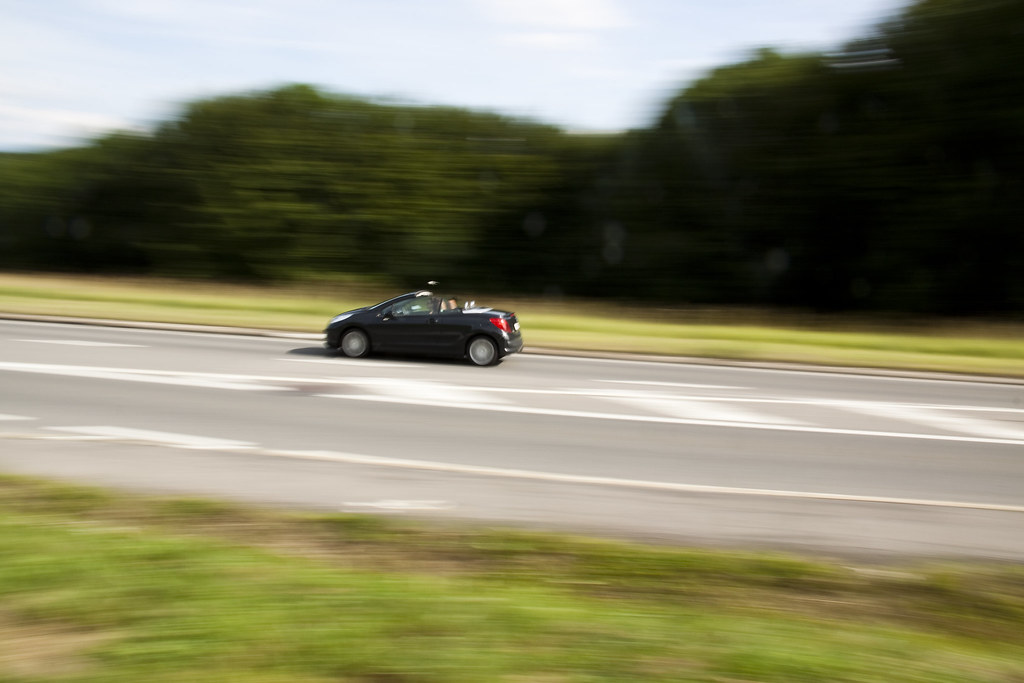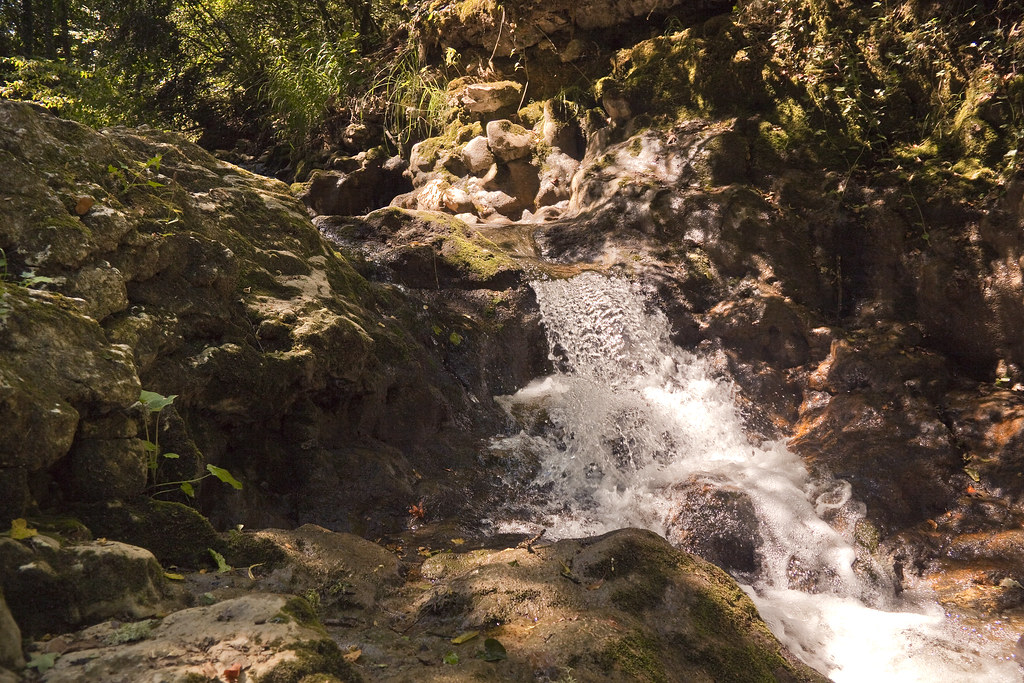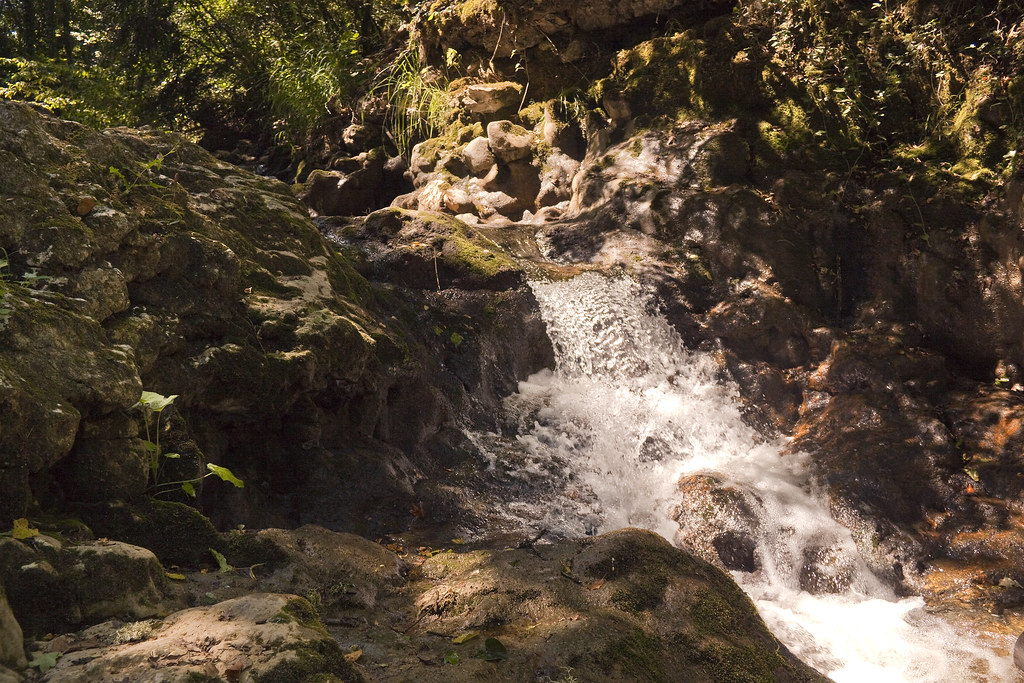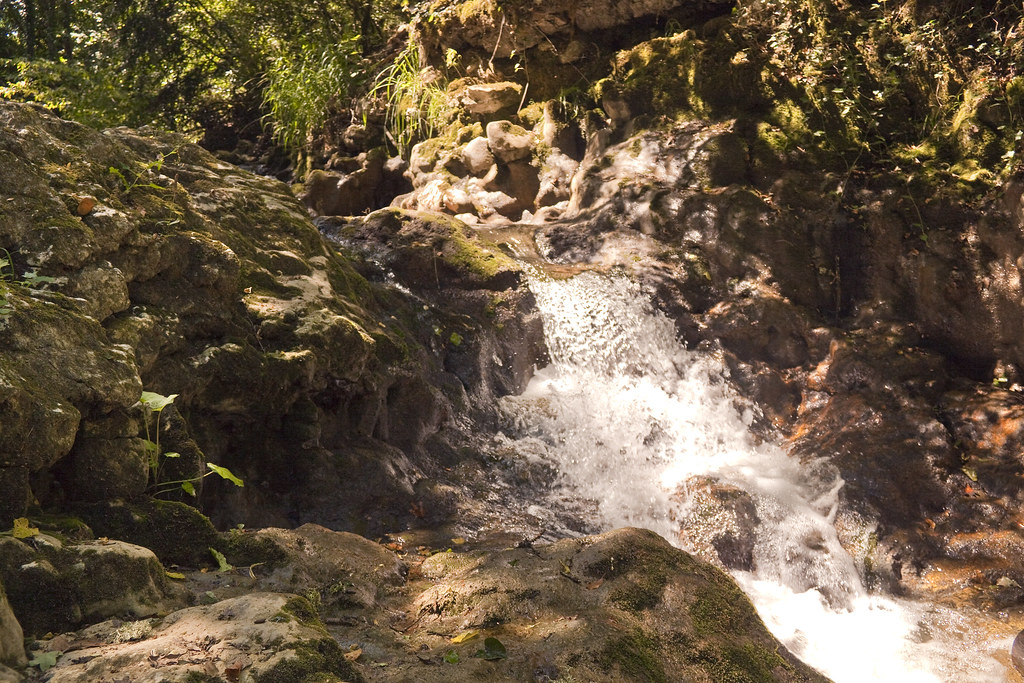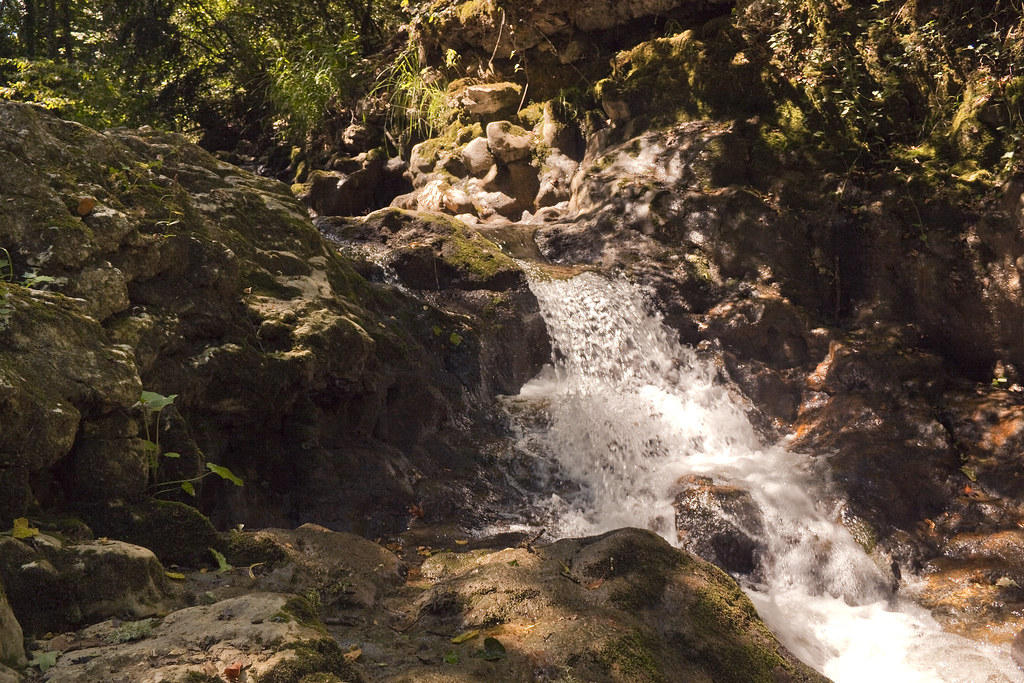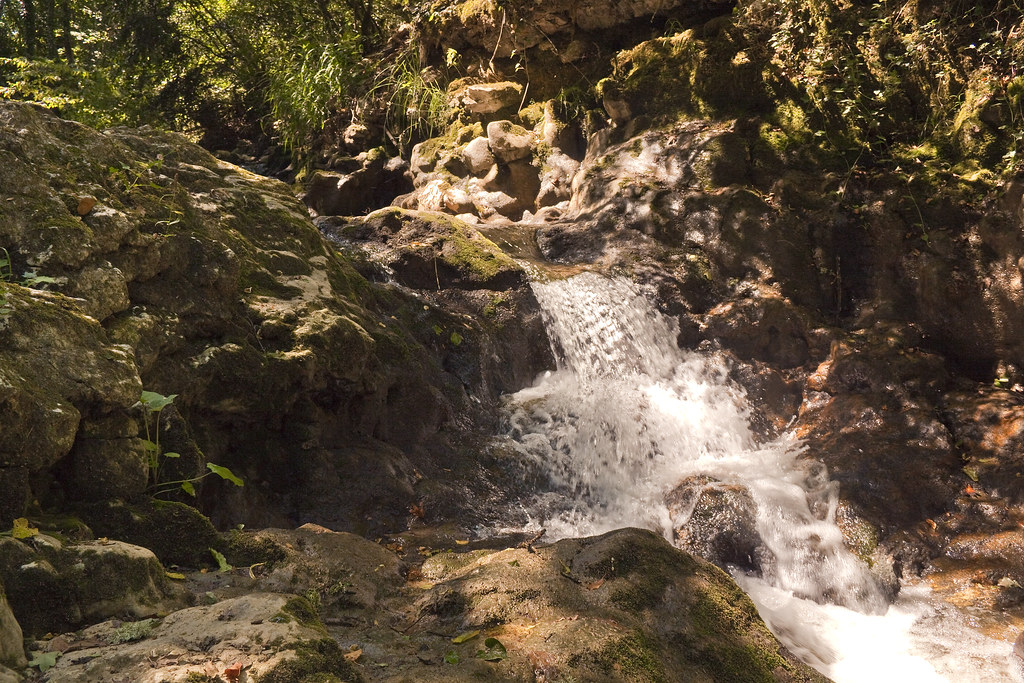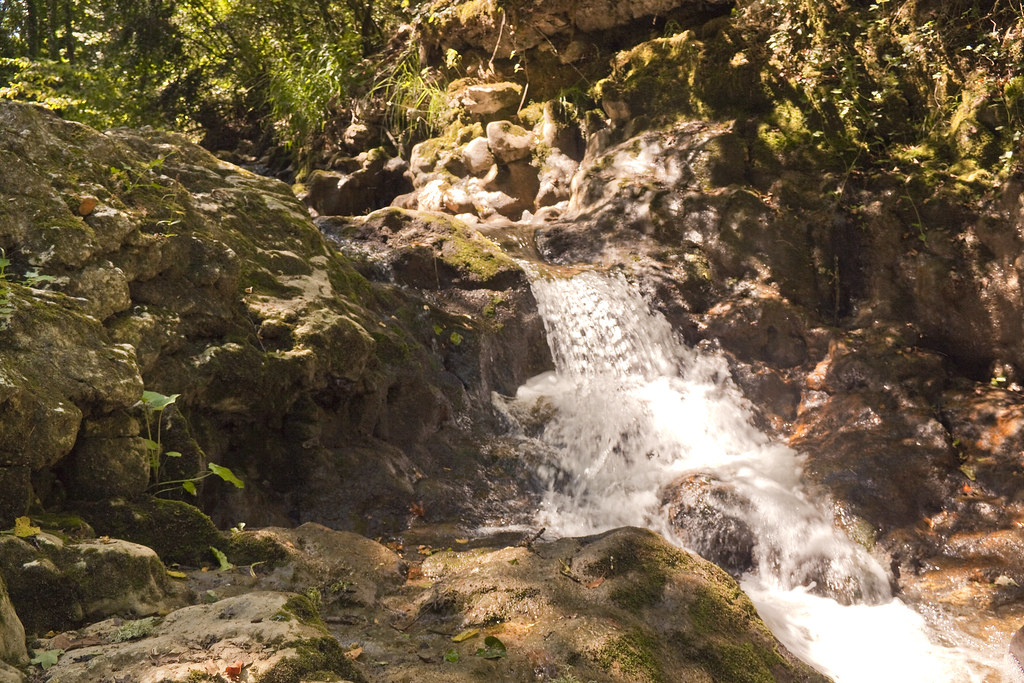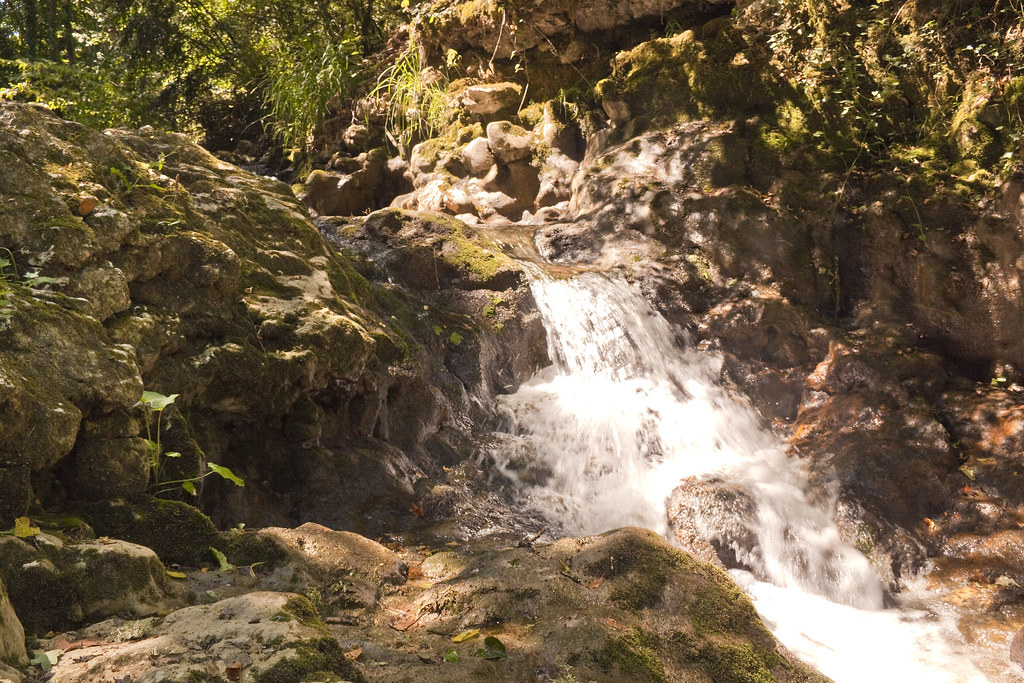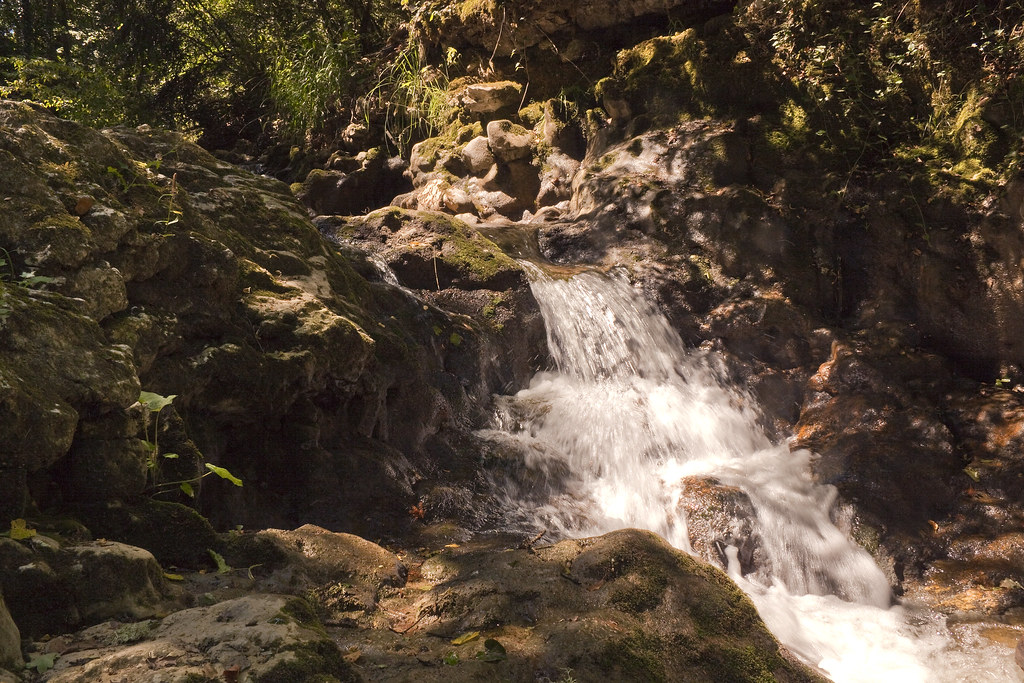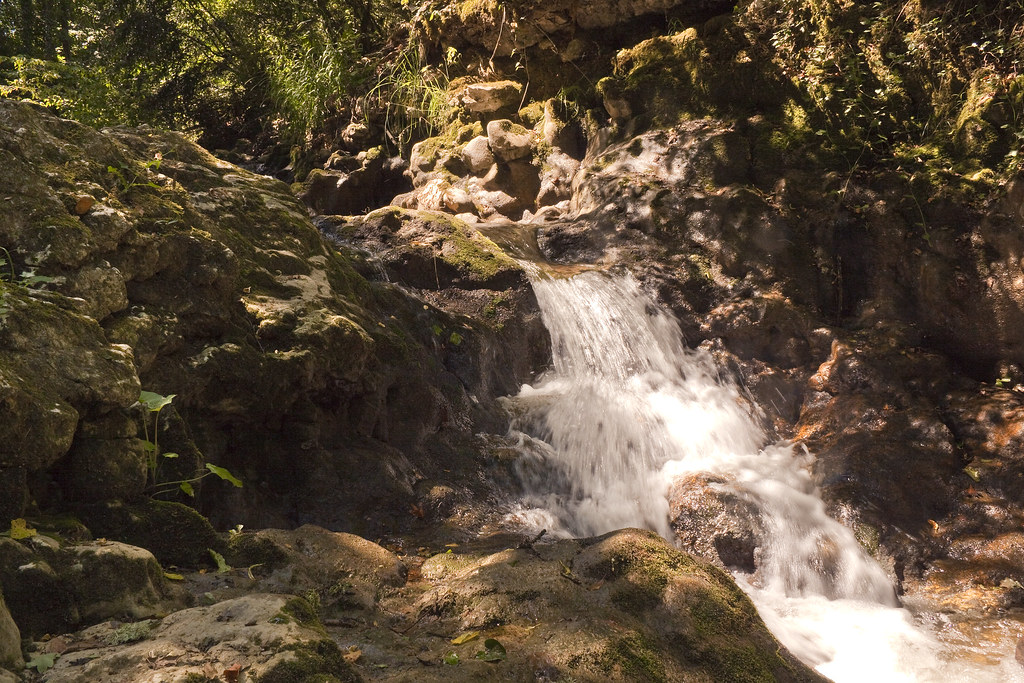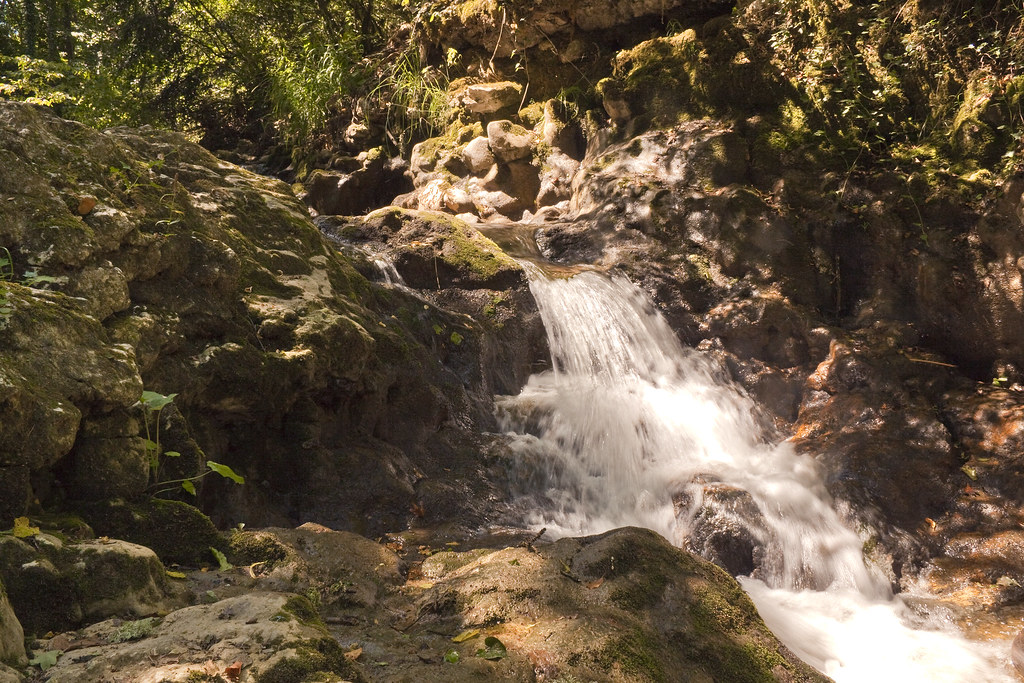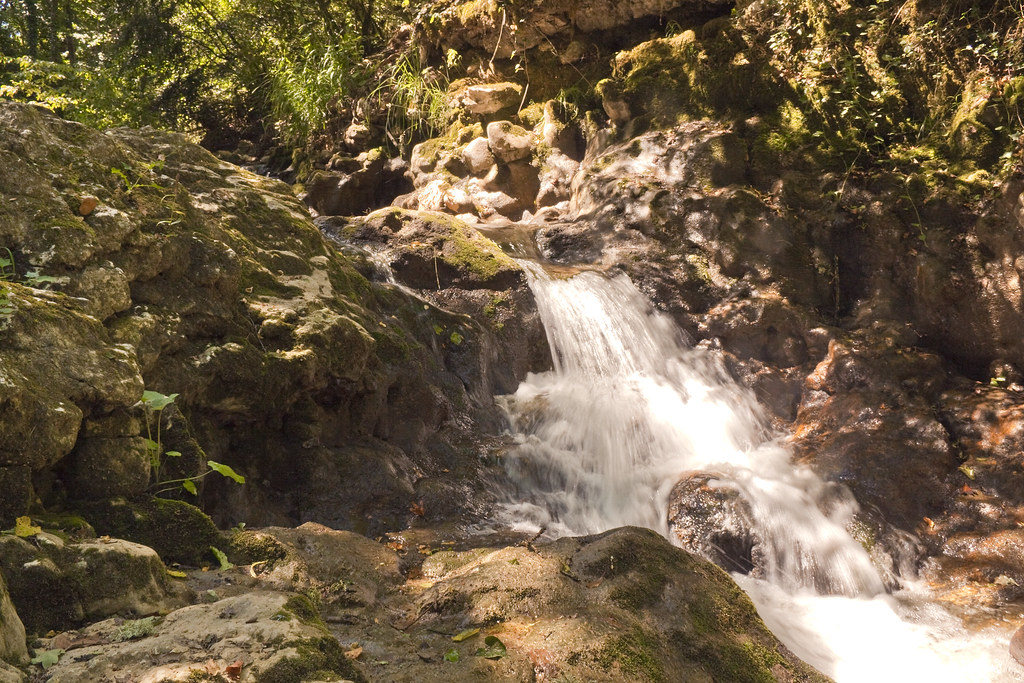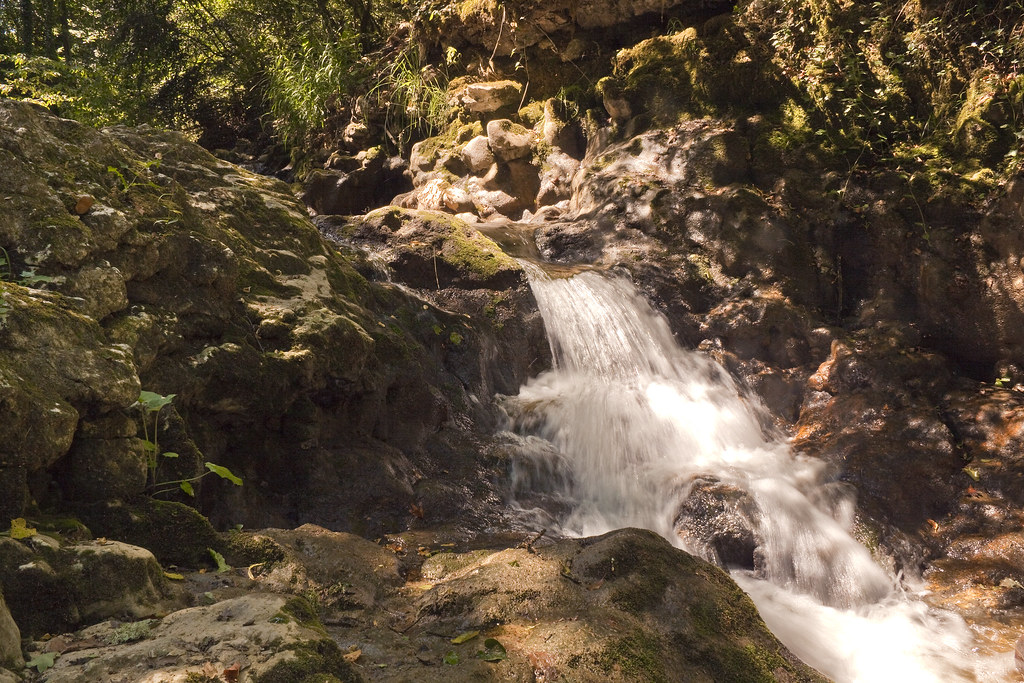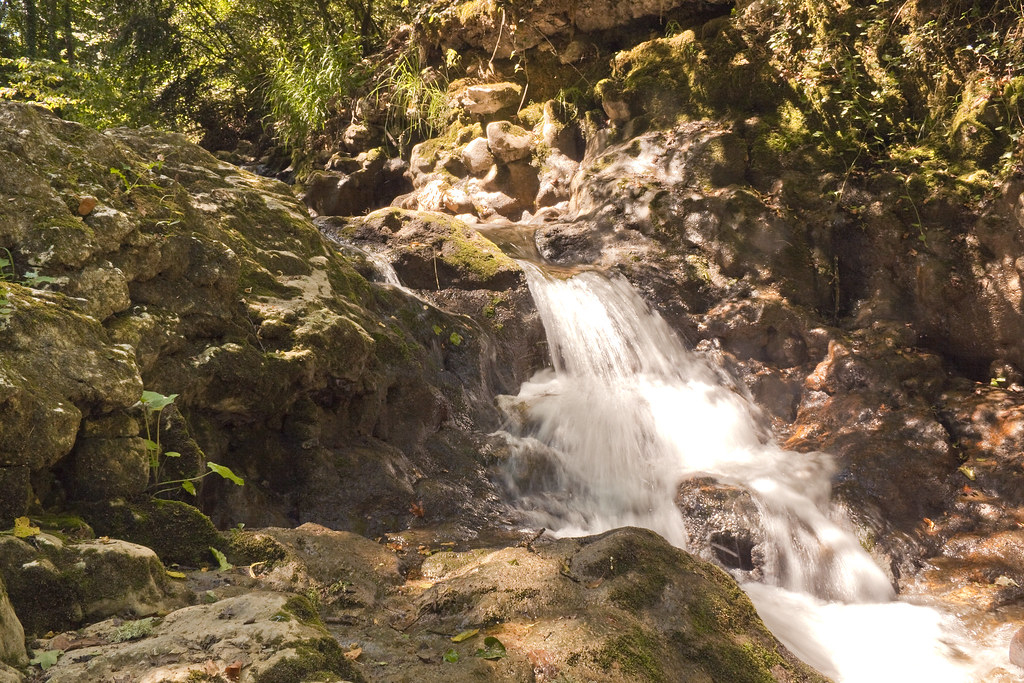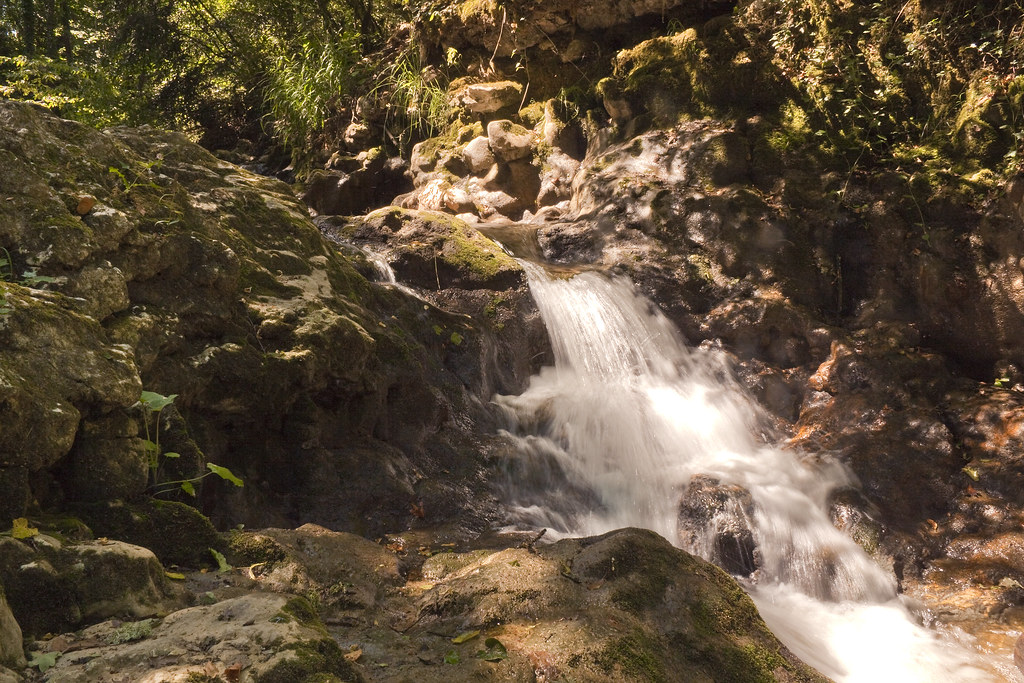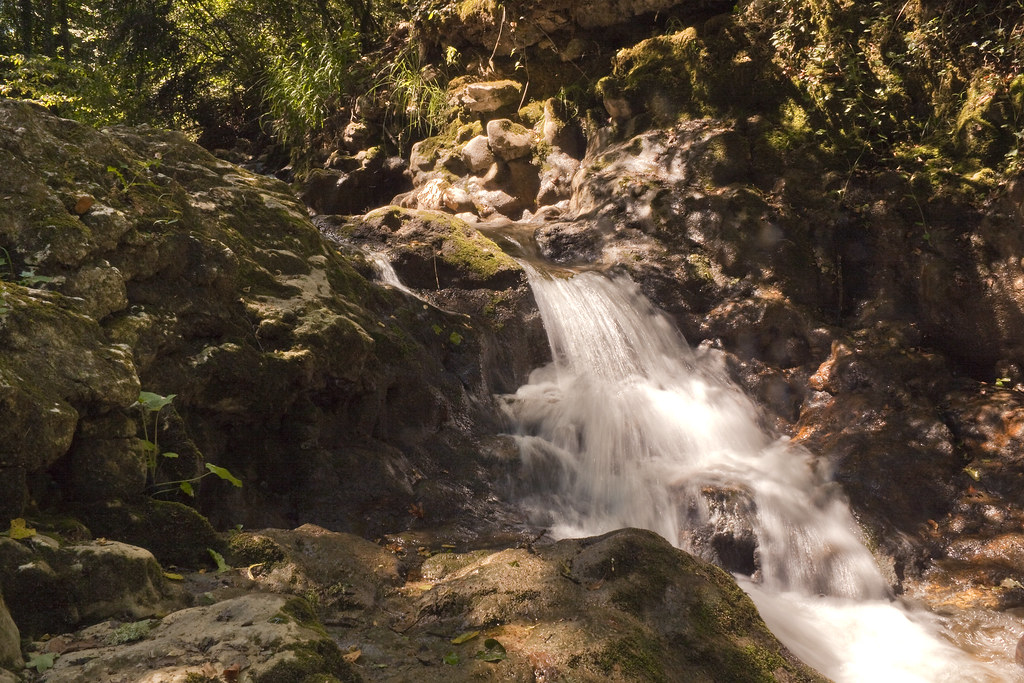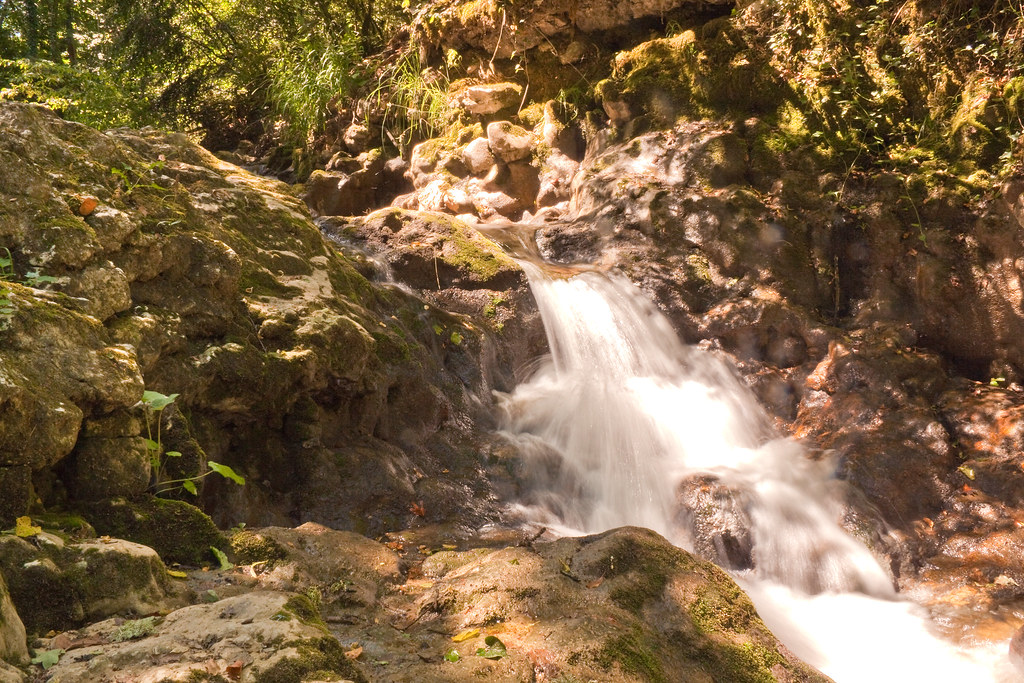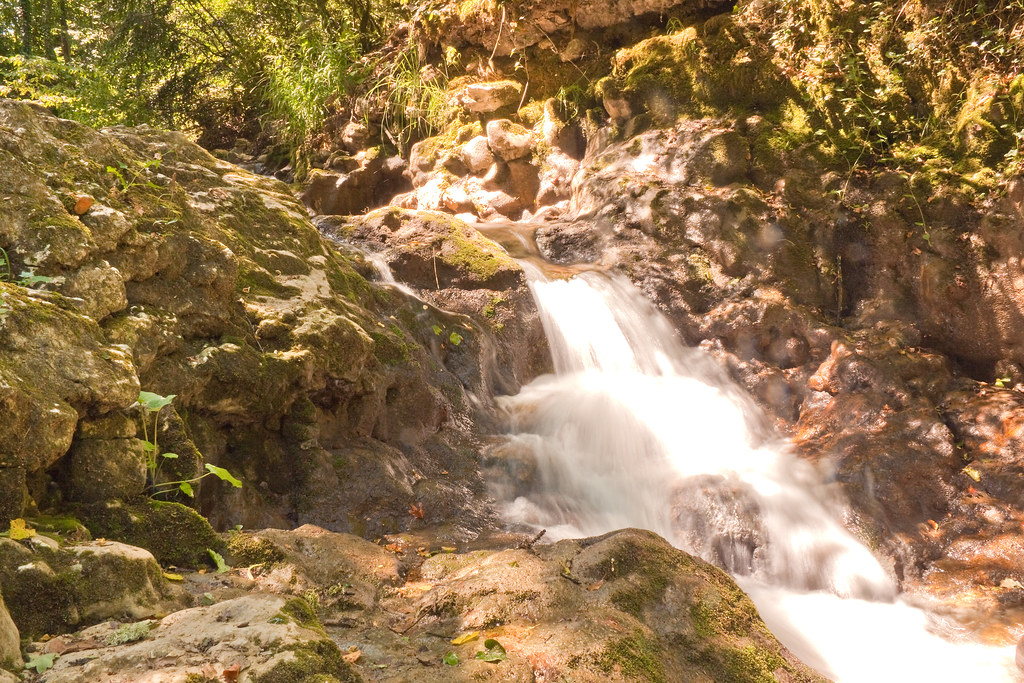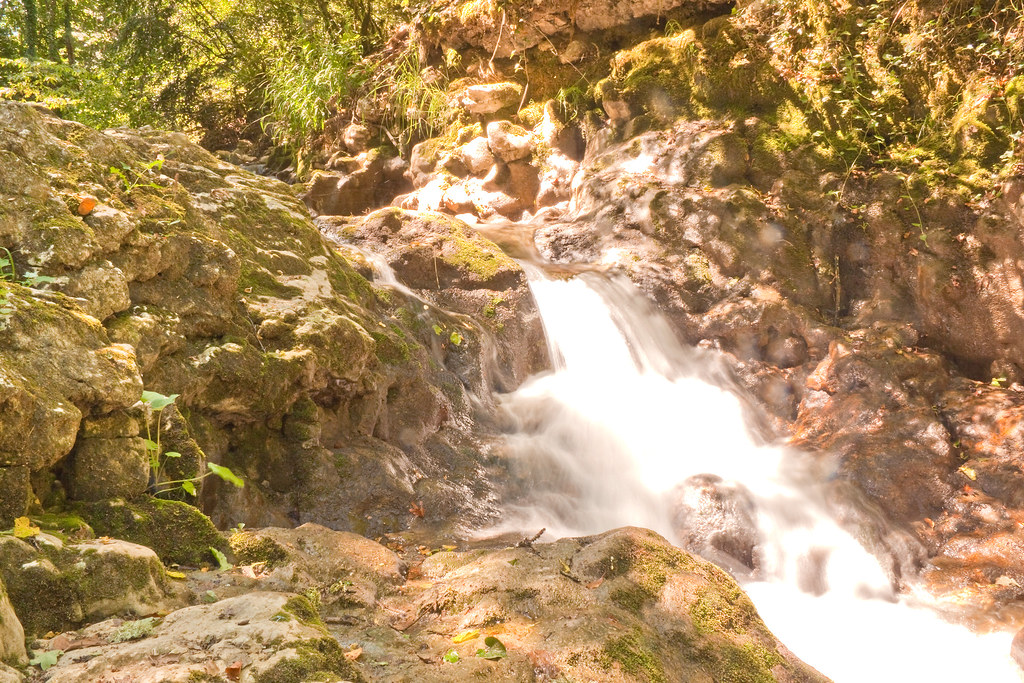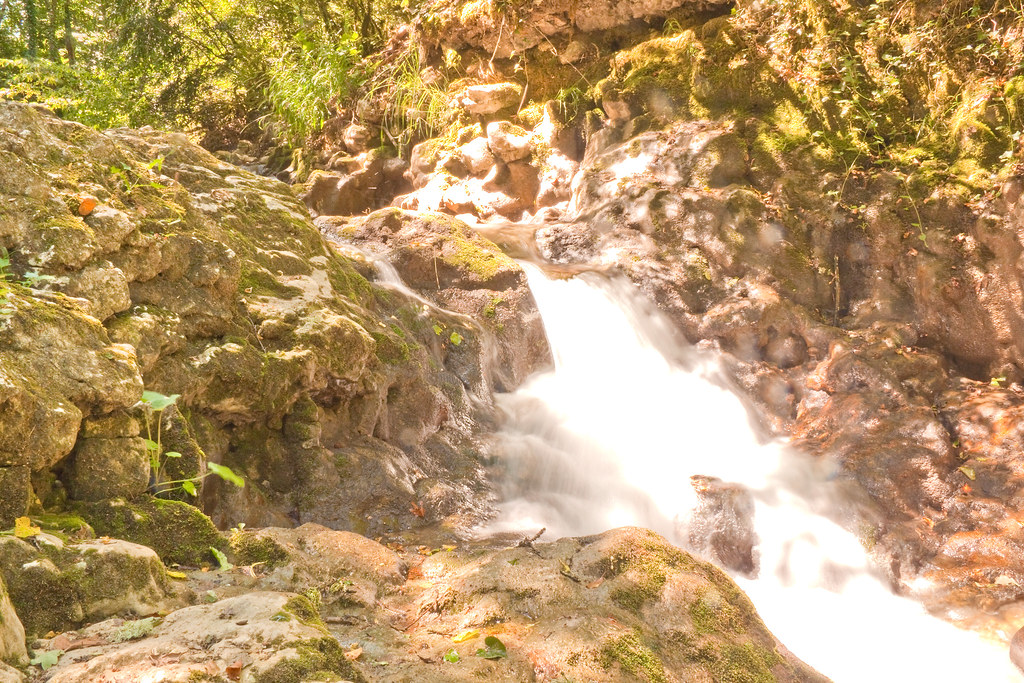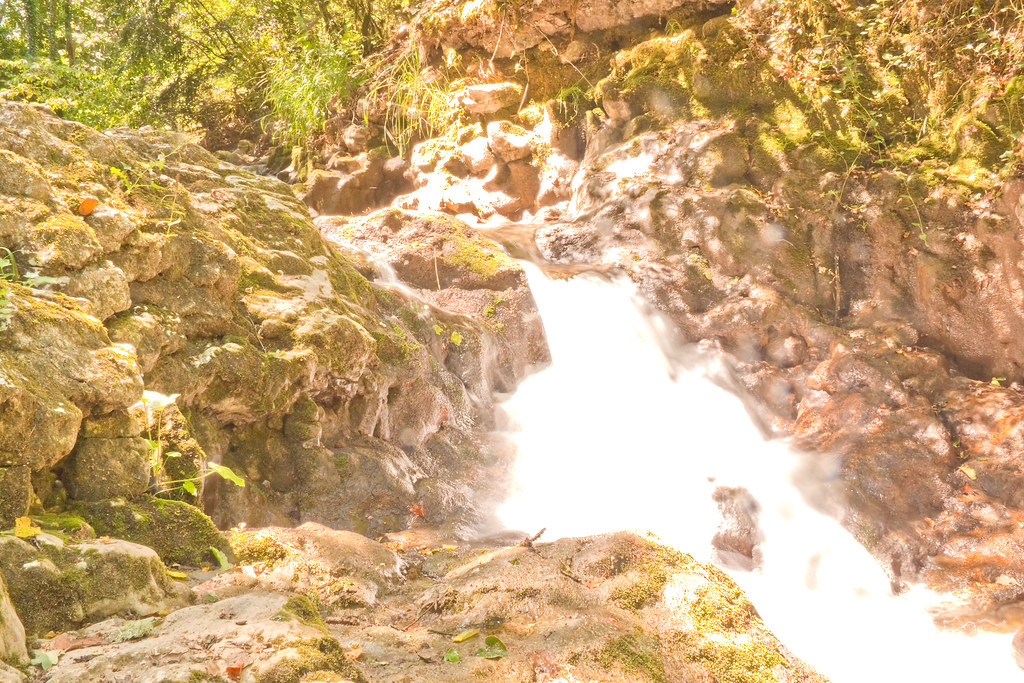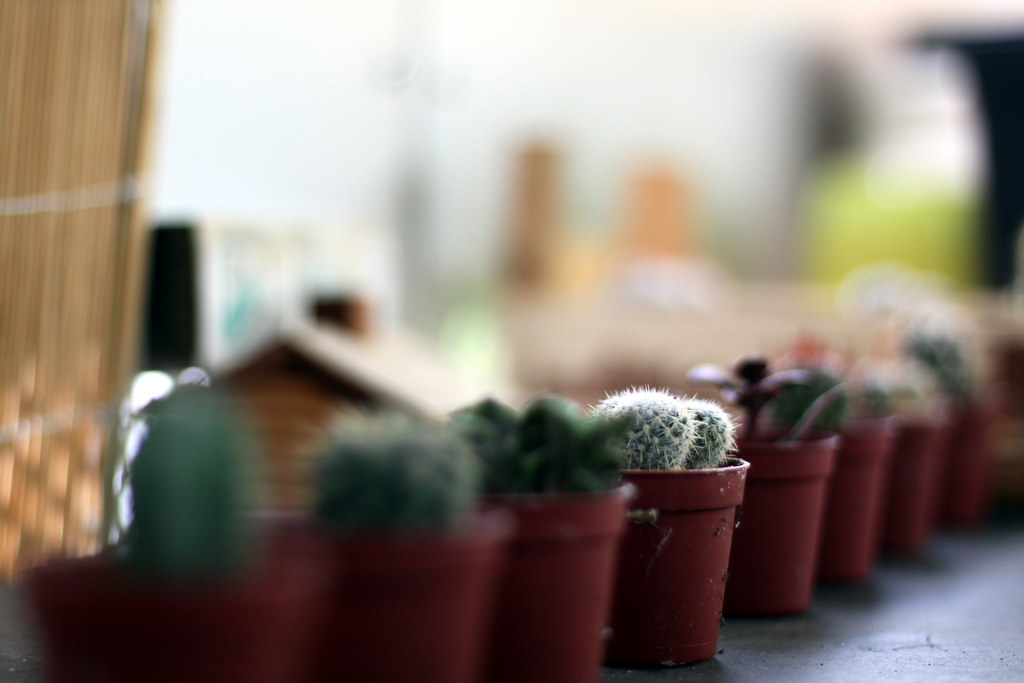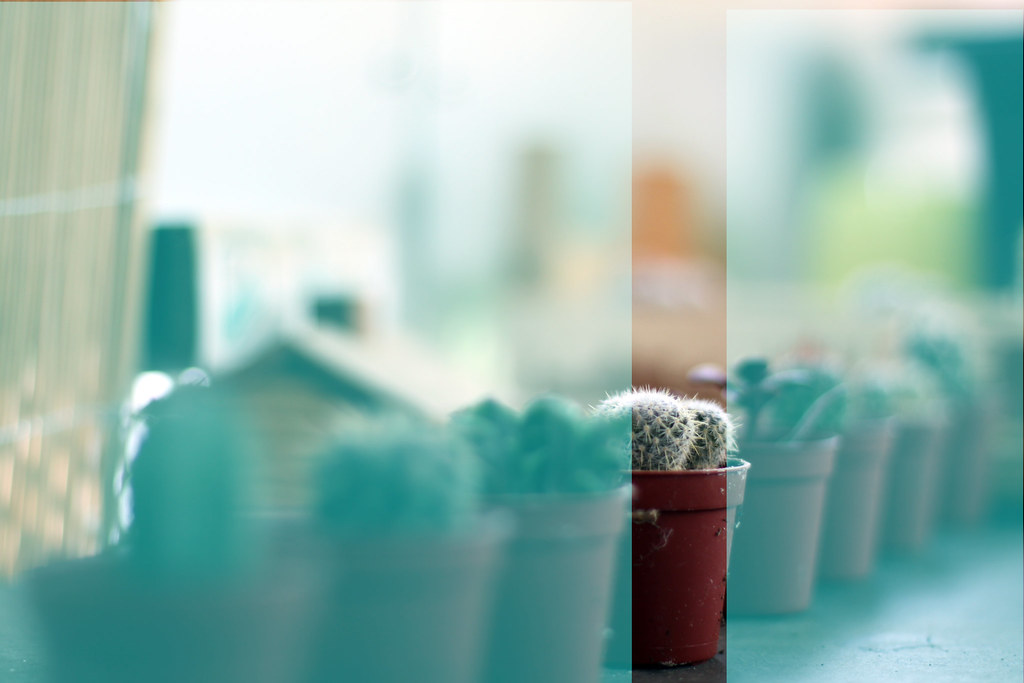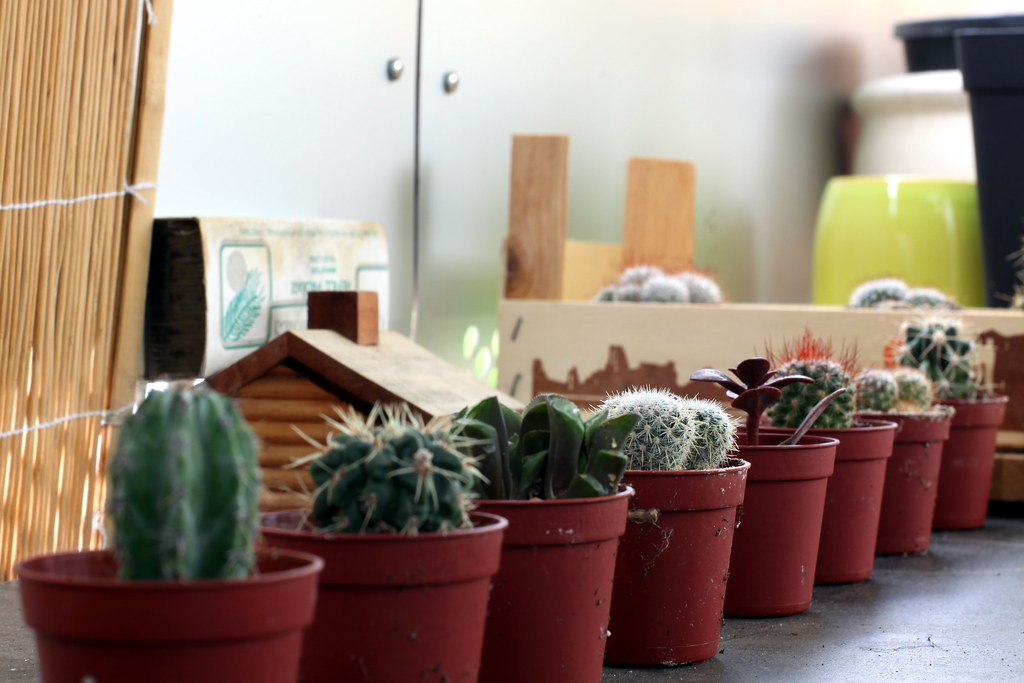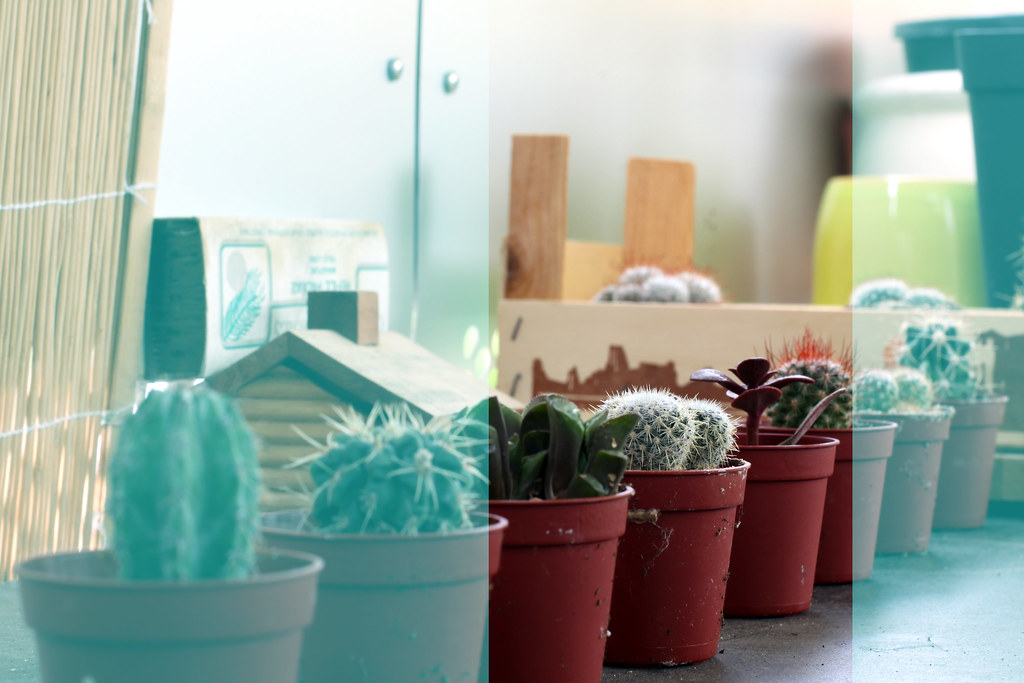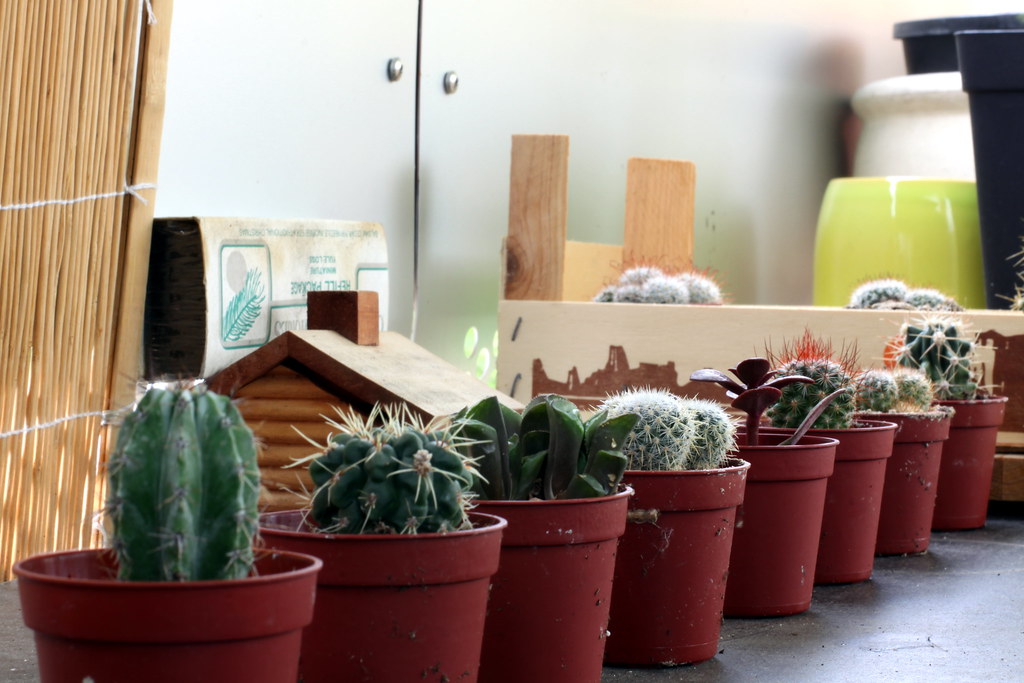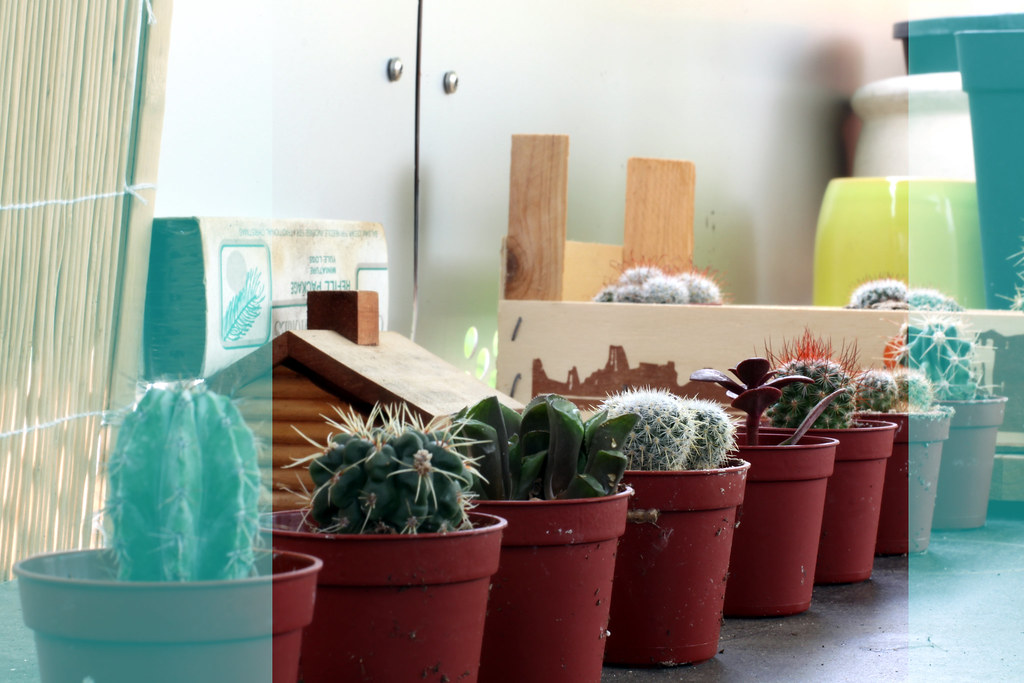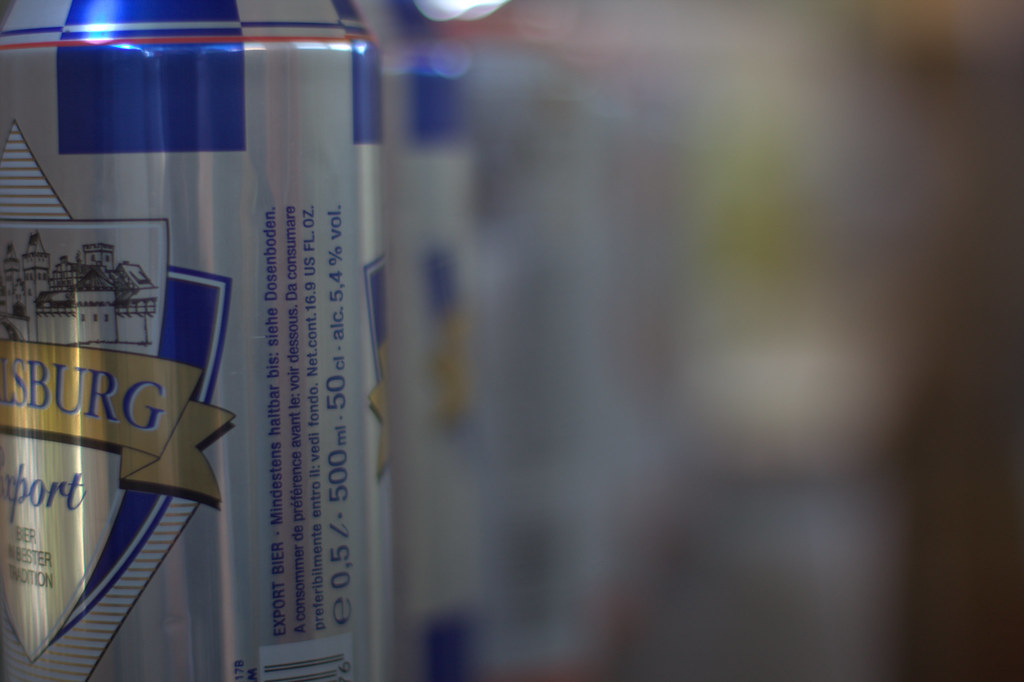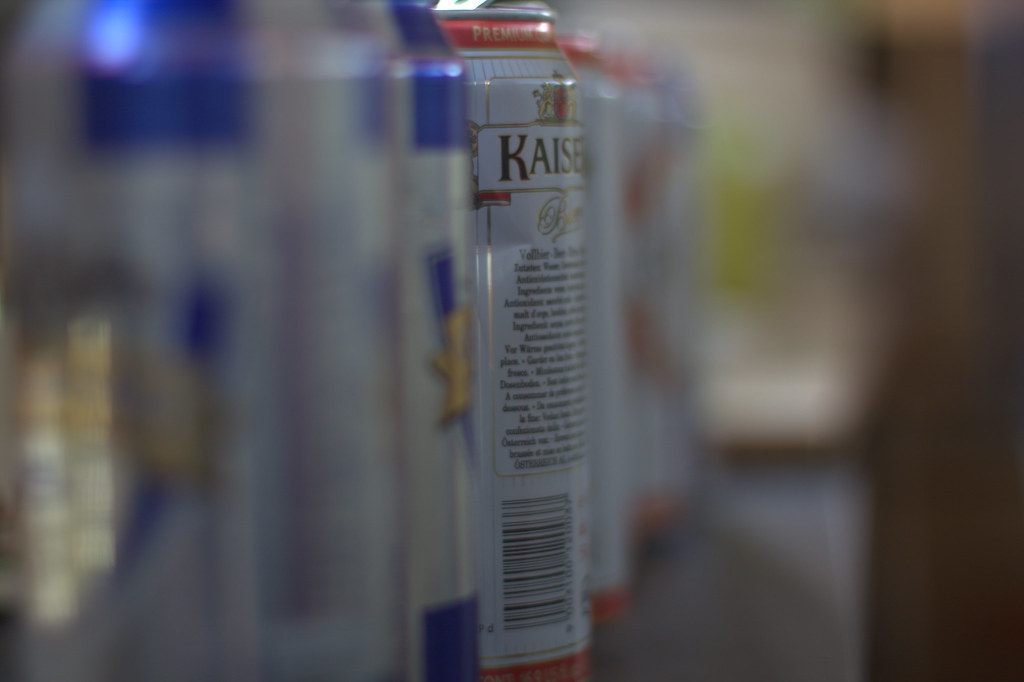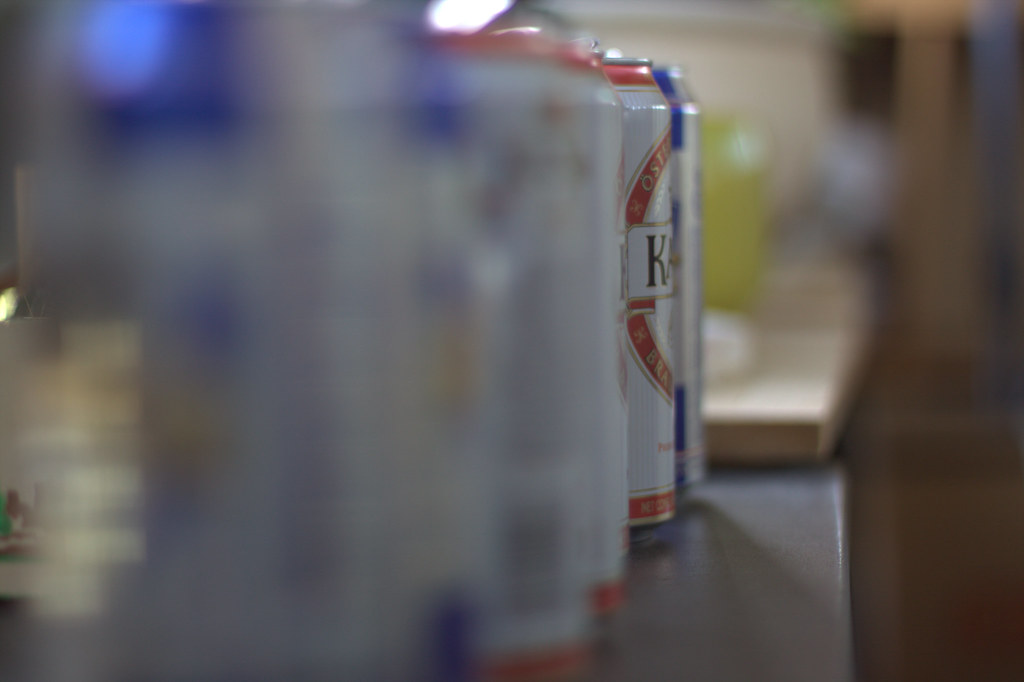This exercise was done at the border of a busy road, most vehicles were going at an average speed of 90 km/h (around 60 miles/h). The exposure was kept the same throughout the exercise by using The TV mode (shutter priority) going from the fastest to the slowest shutter speed. This was all done handheld as my goal was to practice for this technique in order to feel more comfortable with future image opportunities for moving objects.
1/1000s f4
Everything is still, no visible movement as expected.
1/800s f4
Still no visible movement yet, the car could very well be parked, we have no way finding out but to assume.
1/640s f4
No visible movement, yet visually something tells us it is probably moving. It does seem like the background is getting less sharp.
1/500s f4
No obvious movement here but we assume the motorbike is moving as it is standing and in balance. Again, the background is less sharp.
1/400s f5
We see here that oart of the wheels are slightly blurry, but it doesn't look like it's going very fast.
1/320s f4.5
Wheels are getting slightly more blurry
1/320s f5
Same as above
1/250s f5
I do not see any major difference with the previous shutter speed
1/160s f5
Wheels are more blurry and the car is clearly starting to stand out of the background compared to the previous image. Background is more blurry and the car seems sharper.
1/125s f5
The Wheels are getting more blurry, same as background. This makes the car stand out more than the previous image and looks slightly faster.
1/100s f6.3
The Wheels are much blurrier now, making it harder to see the gaps near the center, a more uniform color is starting to form from the center towards the edges. This is quite logic due to the higher speed at the center of the wheel. The movement is very clear now, increased by the blurry car coming the opposite way.
Yet, it is still hard to feel whether it's going at a high speed or not.
1/80s f7.1
Here we start feeling the sense of speed. The background and the wheels are very blurry.
I also have the feeling that as it's a sports car the sense of speed is greater.
1/60s f9
The car clearly stands out from the background, it almost looks fake and makes the car look like a toy.
Sense of speed is not so visible, as we see the car from an angle the effect is not as strong as it was with the previous image, which was near a 90 degrees angle from the camera.
1/50s f8
Here the effect is less noticeable as the subject is far from a 90 degrees angle.
1/40s f11
1/30s f13
This reminds me of the tilt shift effect making the subject appear like a miniature model.
1/25s f16
1/25s f8
Being roughly at a 90 degrees angle and having the background blurred with a left to right movement makes the car look as if it is going much faster than the previous images.
1/20s f20
This truly gives a sense of high speed, this is one of my favorite.
Overall, I think this technique could be very interesting to use for moving objects or human beings, It really makes an otherwise very dull image much more interesting and brings the subject alive. I will definitely use it more from now on. I also realise that an "interesting" shutter speed would prove to be different in every situations. For cars it might be more straightforward by judging the average speed and then tweaking around a shutter speed of 1/average speed. In this case it worked quite well, the image started to look interesting from a shutterspeed of 1/80 s. It might also be worth trying much slower shutterspeeds in the future.
